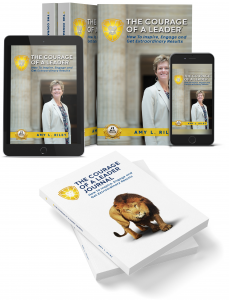Build the Ultimate Corporate Culture
70% of engagement is attributed to the leader, according to Gallup (Randall Beck and Jim Harter, Gallup Business Journal, April 21, 2015). As a leader, you are the biggest factor determining whether those around you are fully dedicated to the work, or not.
Leaders need the commitment, the ideas, the passion, and the work of others to make big ideas come to life. How do you get that kind of commitment from others? How do you get others fully engaged?


The big idea and the strategies associated with that big idea need to make sense in people’s heads. You want a compelling and clear message.
A message is compelling and clear when it includes both a Compelling Purpose and a Clear Finish Line.
Start with a Compelling Purpose
People will have more desire to be involved with your endeavor and be more engaged day-to-day, when you’re able to articulate a compelling purpose. Speak to a purpose that goes beyond making a profit. Why should folks really care? Why should they get out of bed in the morning and work on this initiative with you, when they have so many choices?
A powerful Compelling Purpose can apply to an organization, an initiative, a project, a goal or a practice area.
Next, define a Clear Finish Line
What are you up to exactly? What’s the goal?
What’s most important here is that you’ve got a clear line in the sand defined so that folks will know exactly when you’ve crossed that line and are complete. Defining a finish line also ensures clarity. You and I both know what know exactly what’s needed before we can cross the finish line and declare that race complete.
Also, it’s important to have a due date. This creates a sense of urgency and sparks the need to break the goal down and get into action, so the ultimate deadline is not missed.
Bringing a Compelling Purpose and a Clear Finish Line together creates your complete compelling and clear message.

Most leaders, with some hard work, feedback from multiple stakeholders and many iterations, can get the compelling and clear message crafted and engage organizational members’ heads. Yet, our job as leaders is not finished there. Not if we want true engagement.
I find that most often the trickier part is getting employees’ hearts engaged, to have them feel emotion and passion about what they’re involved in. It proves challenging to many leaders, yet there’s a single secret: You show vulnerability.

Now, if you have a team member nervously preparing for a presentation in front of the company’s largest division, then maybe you share your embarrassing Third Grade moment about fainting during speech class. You’re sharing and showing vulnerability to empathize and communicate that your 8-year-old-self survived and you’re here to support the team member in the ways he most needs.
An Engineering Manager, Marcus, who I worked with throughout a leadership development program for seasoned managers, recognized that he was not often being vulnerable with his team. He decided he would start sharing how each team worker brought value to the specific projects and tasks he or she completed. Marcus made a commitment to himself – and me – to share this with 2 employees each week. He put these 2 weekly actions in his calendar. He vulnerably stepped through his discomfort and had these interactions each week.
When Marcus’ team members saw more clearly how and where they provided value, they got new ideas about how they could provide more of that same or similar value. Their department’s reputation improved. They sang each others’ praises to the rest of the organization. The Engineering team self-organized around their individual strengths and within 6 months, engineering designs were being completed in 75% of the time it previously took.
Marcus’ willingness to be vulnerable translated into significantly increased engagement. Even though the Engineering group had a Compelling Purpose of designing to meet current and future needs and a Clear Finish Line of shortening the design life-cycle by 50% by the end of the year, it wasn’t until their Manager stepped up his vulnerability that team members felt valued and committed in a heartfelt way. This level of commitment catapulted their creativity and made a seemingly impossible goal easy to surpass.
The powerful combination for off-the-chart engagement is to 1) engage people’s heads with a compelling and clear message and 2) engage people’s hearts by showing vulnerability.







 A Summary of The Courage of a Leader® 4 Pillars
A Summary of The Courage of a Leader® 4 Pillars




